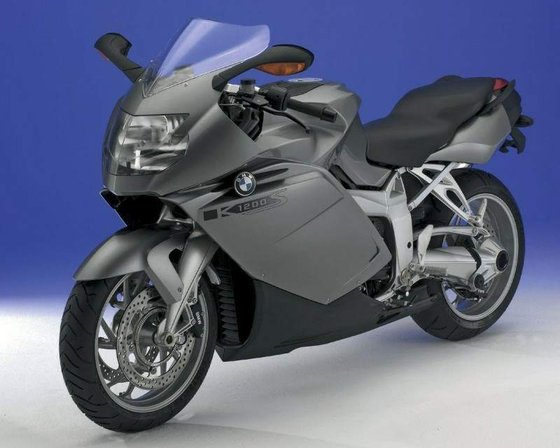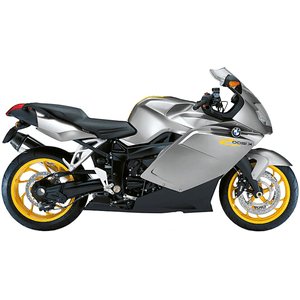BMW K 1200 S (2004-2008): A Sportbike That Rewrote the BMW Playbook
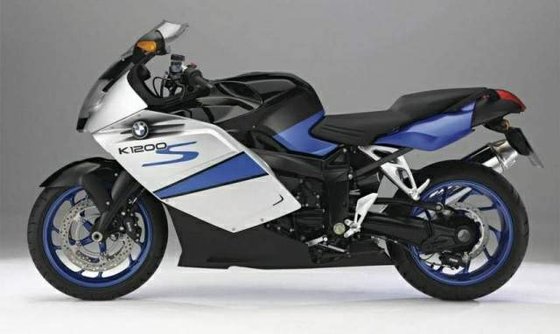
When BMW unveiled the K 1200 S in 2004, it wasn’t just a new motorcycle—it was a declaration. For a brand synonymous with boxer engines, telelever forks, and a steadfast commitment to touring comfort, the K 1200 S felt like a rebellion. Here was a transverse inline-four sportbike, dripping with cutting-edge engineering, aimed squarely at the Japanese superbike establishment. After a day in the saddle of this Bavarian beast, one thing becomes clear: The K 1200 S isn’t just a motorcycle. It’s a statement.
Engine Performance: A Symphony of Controlled Fury
At the heart of the K 1200 S lies its 1,157cc inline-four engine, a masterpiece that blends BMW’s penchant for innovation with raw, unapologetic power. With 167 hp at 10,250 rpm and 129 Nm (95.4 lb-ft) of torque peaking at 8,250 rpm, this engine isn’t just powerful—it’s intelligent. The 13:1 compression ratio and double overhead cams scream performance, while dual knock sensors and oil-cooled pistons (a trick borrowed from BMW’s Formula 1 program) keep detonation at bay.
Twist the throttle, and the response is immediate. The engine builds momentum like a crescendo: docile below 4,000 rpm, assertive by 6,000 rpm, and downright feral as it approaches the 11,000 rpm redline. The 0-100 km/h (0-62 mph) sprint takes just 3.0 seconds, and it’ll devour a quarter-mile in 11.7 seconds at 209 km/h (130 mph). Yet, what’s remarkable isn’t the speed—it’s the refinement. Twin balance shafts mute vibrations, leaving only a purposeful hum through the handlebars.
Fuel efficiency? Surprisingly reasonable for a beast of this caliber. Expect 6.7 L/100 km (35.3 US mpg) during spirited rides, stretching to 4.7 L/100 km (50.05 US mpg) if you exercise restraint. Just don’t expect the 19-liter (5.0 US gal) tank to last long when you’re chasing the horizon at its 286 km/h (178 mph) top speed.
Chassis & Handling: Defying Physics with Duolever
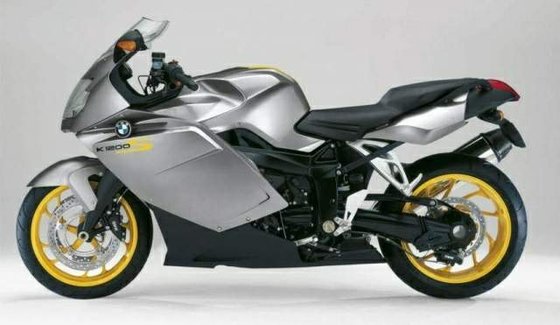
If the engine is the K 1200 S’s heart, its Duolever front suspension is the brain. Replacing traditional telescopic forks, this system uses two parallel arms and a central shock to separate steering forces from braking and acceleration. The result? A front end that’s immune to dive under hard braking and unshakably stable mid-corner.
Paired with the Paralever rear suspension—a BMW staple that counters shaft drive jacking—the K 1200 S feels both agile and planted. At 248 kg (547 lbs) wet, it’s no featherweight, but the chassis masks its heft brilliantly. The steering is light, with a 29° rake and 112 mm (4.4 in) of trail striking a balance between quick turns and highway stability.
Push it into a corner, and the Bridgestone BT014 or Metzeler Sportec M1 tires (120/70-17 front, 190/50-17 rear) cling to the tarmac. Lean angles are generous, though the footpegs will scrape before the limits are reached. For riders craving adjustability, the optional Electronic Suspension Adjustment (ESA) lets you tweak damping and preload on the fly—a rarity in 2004.
Rider Comfort: Sportbike Aggression, Touring Sensibility
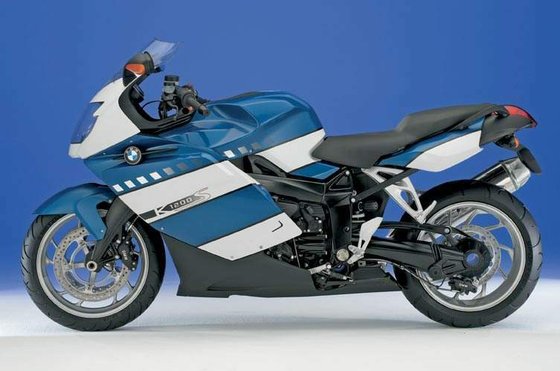
BMW couldn’t resist infusing the K 1200 S with practicality. The riding position is sporty but not sadistic: the 820 mm (32.3 in) seat height accommodates most riders, while the slightly forward-leaning bars and low pegs offer a compromise between control and comfort. Heated grips (optional) and a windscreen that directs airflow to the chest (rather than the helmet) make long rides bearable, though wind noise is still a gripe.
The instrumentation is a blend of analog and digital, with a gear indicator, fuel gauge, and even a coolant temperature bar graph. BMW’s CAN-bus wiring system eliminates fuses, relying on sensors to diagnose issues—a feature that felt space-age in its day.
For touring, optional hard saddlebags add utility, though their 15-liter capacity per side is best suited for weekends, not cross-continent treks. Still, the ability to fit a full-face helmet in an expanded bag is a neat party trick.
Braking & Safety: Confidence at Any Speed
Stopping power comes from twin 320 mm front discs gripped by four-piston calipers, linked to a 265 mm rear disc via BMW’s Partial Integral ABS. Squeeze the lever, and the system delivers progressive, panic-proof braking. Initial bite is gentle, but ramp up the pressure, and the K 1200 S sheds speed like a fighter jet catching wires on a carrier deck. The ABS is unobtrusive, only intervening when traction evaporates—a rarity given the tire grip.
Competition: How Does the K 1200 S Stack Up?
In 2004, the sport-touring segment was dominated by bikes like the Suzuki Hayabusa, Honda CBR1100XX Super Blackbird, and Yamaha FJR1300. Here’s how the BMW holds its own:
- Power: The K 1200 S’s 167 hp outguns the FJR1300 (145 hp) and matches the Hayabusa, though the latter’s turbo-like midrange feels more explosive.
- Tech: Shaft drive, Duolever, and ESA gave the BMW a technological edge. Japanese rivals relied on conventional forks and chains.
- Comfort: The Hayabusa and Blackbird prioritized speed over ergonomics, while the FJR1300 leaned into touring. The K 1200 S straddled both worlds.
- Weight: At 248 kg (547 lbs), the BMW is heavier than the Blackbird (223 kg) but hides it better thanks to its chassis.
The K 1200 S wasn’t the fastest or lightest, but it offered a uniquely Bavarian blend of innovation and versatility.
Maintenance: Keeping the Beast Alive

Owning a K 1200 S isn’t just about riding—it’s about stewardship. Here’s what to watch:
- Valve Adjustments: BMW’s interval-less system relies on onboard diagnostics. A dealer tool is required, making DIY adjustments tricky. Expect shim-under-bucket work every 20,000-30,000 km (12,400-18,600 mi).
- Shaft Drive: Unlike chain-driven rivals, the BMW’s shaft requires minimal upkeep—just regular final-drive oil changes (180 ml of SAE 75W-90).
- Tires: The stock Metzeler Sportec M1 or Bridgestone BT014 tires wear quickly under hard use. Upgrade to modern rubber like Michelin Road 6 or Pirelli Angel GT for better longevity.
- Throttle Response: Early models suffered from abrupt fueling. A dealer ECU reflash smooths this out—a must for city riding.
- Brakes: Glazed pads can cause squealing. Replace with sintered aftermarket pads for improved bite and noise reduction.
The Verdict: A Legacy of Innovation
The BMW K 1200 S wasn’t perfect. Its weight, thirst, and occasional vibes reminded you it was a first-gen marvel. But it was also a motorcycle that dared to be different—a German engineering flex that redefined what a sportbike could be.
Today, it’s a cult classic: a bridge between BMW’s staid past and its current S1000RR-dominated present. For riders who crave character, tech, and a touch of madness, the K 1200 S remains a compelling proposition. And for those keeping theirs on the road, MOTOPARTS.store has the oils, filters, and upgrades to keep this legend alive.
